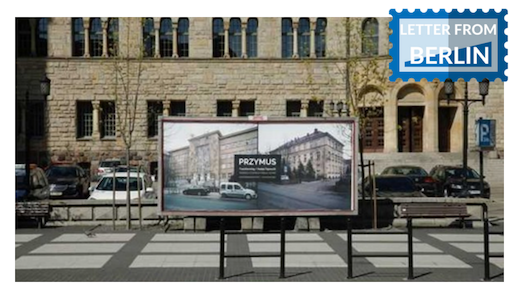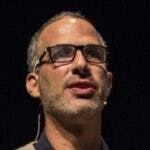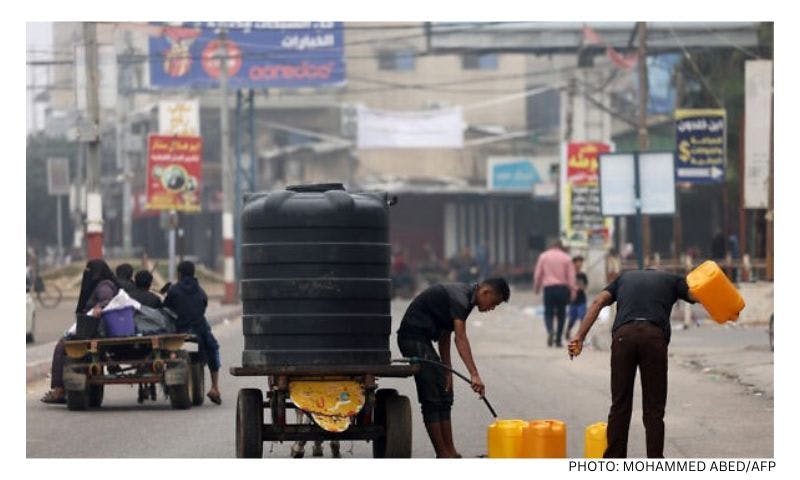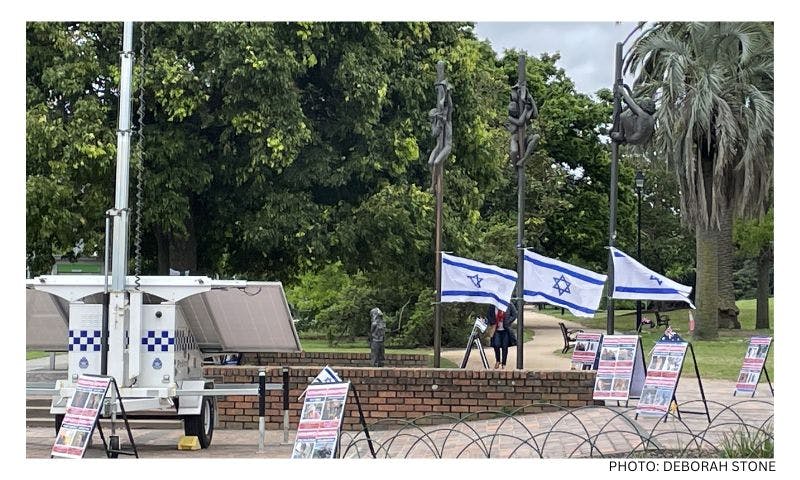Published: 9 October 2018
Last updated: 4 March 2024
Her aim in the project, Memory Practise, which she started in 2013, is to find out how these buildings were “normalised”. She is photographing them in colour, as they look today, as a way of showing how these buildings have “forgotten their past” and returned to being regular civic or industrial buildings.
Tapouchi moved to Berlin in 2012 to broaden her artistic horizons. “I had just finished my master of art studies and I felt that Tel-Aviv and its art scene were too small for me. My masters project was about the third generation of people in war and conflict: The Palestinian Nakba, The Holocaust and the Germans whose grandparents were from the Nazi era.”
For that project, she took photos of the third generation of Palestinians after 1948, together with photos of the third generation of Holocaust survivors who were born in the same years. She also took pictures of the Germans who were born in the 1970s.
She described her aim as follows: “In Israel we cannot compare between our catastrophe and the others. And I think it incomparable. But I do want to check how one catastrophe leads to the other, how one minute you are a victim and then another minute you become the victimiser.
“I put these photographs together in an exhibition as a radical move to remember the chain events and to remind us that the three narratives have a connection.”
The inspiration for her current work came from reading a book about Nazi forced labor camp sites by German historian Rainer Kubatzki, who wrote down the addresses of Nazi buildings all over Berlin and the nearby town of Brandenburg. He was documenting the transformation of public urban spaces.
[gallery columns="1" size="large" ids="23411"]
Tapouchi says she has photographed a sample of 400 Nazi buildings from WW2 in Berlin in the style of a crime scene, and since expanding to other European sites, her archive has grown to 1000 photos.
She says that artistically, she was inspired by Bernd and Hilla Becher, two conceptual German artists and photographers who worked with the Düsseldorf art academy “When I saw some of this couple’s work, I thought to myself, ‘this is so cold, so German’. It’s a style where the images are so grey, with no humans and no sky. The object is shot from the same angle. When I came here to Berlin, that sensibility just entered me. My photography became so distant and German.
“When I look at all these photographs of buildings and homes, I sometimes suspect that subconsciously, my project expresses my need for a home - in a very obsessive way.
“The line between nightmare and happiness is a very thin line. Both of my parents disagreed with my move to Berlin. They said: ‘You can go everywhere. But why Germany? It makes no sense.’ Nevertheless, they came to visit me a few times.
“My Polish mother’s side survived the death camps. My father’s side immigrated to Israel after the pogrom in Kishinev in the Russian empire. They were very Zionist and helped establish the township of Petah Tikva. So part of me is very connected to the catastrophe and part of me is very connected to the period of heroism.
In spite of Tapouchi’s decision to live in Berlin, she has only been granted residencies in Poland, Austria and Greece – but not Germany. She thinks it’s because the Germans “are done with the aesthetics and politics of WW2. This is my assumption. They speak about it a lot but in a very special way. We cannot move it or criticise it.
“There is a core within the Germans that sees us as Ashkenazi Jews, as a certain entity, almost like the way Israelis sees the Palestinians. There is some kind of projection and otherness.”
“There is a core within the Germans that sees us as Ashkenazi Jews, as a certain entity, almost like the way Israelis sees the Palestinians. There is some kind of projection and otherness.”
“For the Germans [the war] seen as a thing from the past. It is almost gone and disappeared into the past. It is almost unseen. It is completely transparent. But I am photographing these sites all over the city. My work is colourful and vivid. It’s in colour because I don’t want to speak about history with black and white.
The response to her work in Poland was different. “In Poznan we did a radio interview in Polish and asked people to contact us. It was amazing. So many old ladies called the art institution. It was a success for me. It touched me.
“These people have never been approached. But when they read an article in the local newspapers, the girls in the art institute told me that people were crying on the phone. The old Polish ladies said, ‘we waited so long that somebody will ask us about it’. They couldn’t talk about it in the Communist era. And afterwards nobody cared about it.”
She also photographed in Crete, where German forces massacred civilian residents from nine villages in the Amari Valley during the Nazi occupation. “In Greece the old people are dying in a very old age, 100 and older. So you can meet them. You can meet them but there are no resources to document them.”
In Austria, the reception was quite different. “In Krems we did an artist talk in the city hall. We invited the whole town, of about 23,000 people. I thought maybe a few people will come because this is not a very sexy topic. But even though the photos were beautiful and attractive, only the mayor and his secretaries came to the artist’s talk. We had made huge publicity around it. Yet, I wasn’t upset about it. This silence was a kind of a voice for me.”
Main photo: Street sign in Poznan, Poland – part of Memory Practise (Hadas Tapouchi)
VISIT HADAS TAPOUCHI WEBSITE




